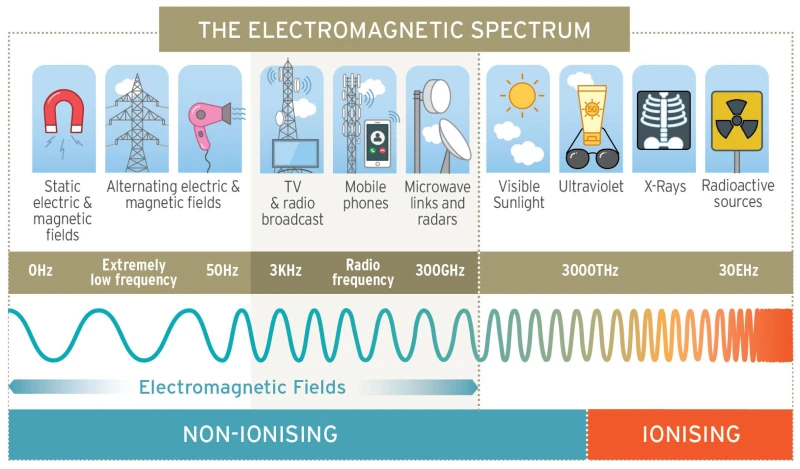Electromagnetic fields (EMF) are essential for modern telecommunications and electricity networks. Our measurements show that the levels of EMF from telecommunications in Ireland are low. They do not pose a risk to the public.
Objectives of the EPA's EMF monitoring programme
Static and ELF EMF Monitoring Programme 2024
Other sources of date about Extremely Low Frequency (ELF) EMF in Ireland
The objective of this programme is to support the EPA’s advisory role to Government and the public in relation to public exposure to electromagnetic fields (EMF). The programme aims to assess the typical levels of EMF exposure found in everyday environments and situations in public spaces in Ireland.
Our programme initially focussed on measuring radiofrequency (RF) EMF, typically emitted by telecommunication equipment such as mobile phone and broadcasting antennae placed on masts and towers. The results of the RF EMF monitoring programme carried out between 2021 and 2022 can be consulted here.
We are currently extending the programme to include static and extremely low-frequency (ELF) EMF, such as those emitted by high-voltage power lines and cables.

There are two types of electromagnetic fields which are associated with electrical infrastructure: static fields and extremely low frequency fields.
Static electric and magnetic fields can be produced by direct current (DC) electricity infrastructure such as underground DC cables. Static electric fields are easily blocked by walls and the ground. Static magnetic fields are not easily blocked. Exposure levels depend on the distance to the cable. However, static magnetic field levels emitted by electricity infrastructure are commonly low and do not pose a health risk.
Extremely low frequency electric and magnetic fields (or ELF EMF) are produced whenever alternating current (AC) electricity is generated (power stations), transmitted and distributed (power lines and cables) or used (electrical appliances). ELF electric and magnetic fields have frequencies between around 1 and 300 Hertz (Hz). The frequency used for electricity in Ireland and other EU countries is 50 Hz.
ELF electric and magnetic fields have independent characteristics and need to be measured separately. ELF electric fields are easily blocked by solid materials, including buildings, trees, and the ground. Therefore, the levels of ELF electric fields at which the public may be exposed are very low, and generally are not a concern. ELF magnetic fields are not easily shielded. However, both electric and magnetic fields fall off rapidly with distance from the source.
The current monitoring programme aims to assess exposure of the public to electromagnetic fields near major electricity infrastructure in Ireland, such as high-voltage overhead power lines and underground cables.
ESB Networks and EirGrid have carried out measurements of ELF electromagnetic fields near major electricity infrastructure in Ireland. The aim of these measurements was to assess the levels associated with specific infrastructure rather than assessing typical exposure of the Irish population. Our monitoring programme will focus on assessing the levels of electromagnetic fields at locations where people live or work near major electricity infrastructure.
During 2024, EPA will take measurements of static and extremely low frequency electromagnetic fields to assess public exposure levels close to major electricity infrastructure. The focus will be to measure exposure in locations where members of the public are likely to be most exposed and to compare this to the reference levels set out by the European Commission. To this end, EPA has prepared a monitoring programme that will look at high-voltage overhead lines, underground cables and substations. In total, EPA anticipates that approximately 50 sites will be measured as part of this programme. The results of these measurements will be made publicly available and will inform any advice EPA may make to the Irish Government.
EirGrid has published several reports (PDF 6.9MB) of ELF EMF measurements made close to electricity transmission and distribution infrastructure (popularly known as power lines or "pylons"). These data show that EMF levels from power lines are also typically well below recommended exposure limits.